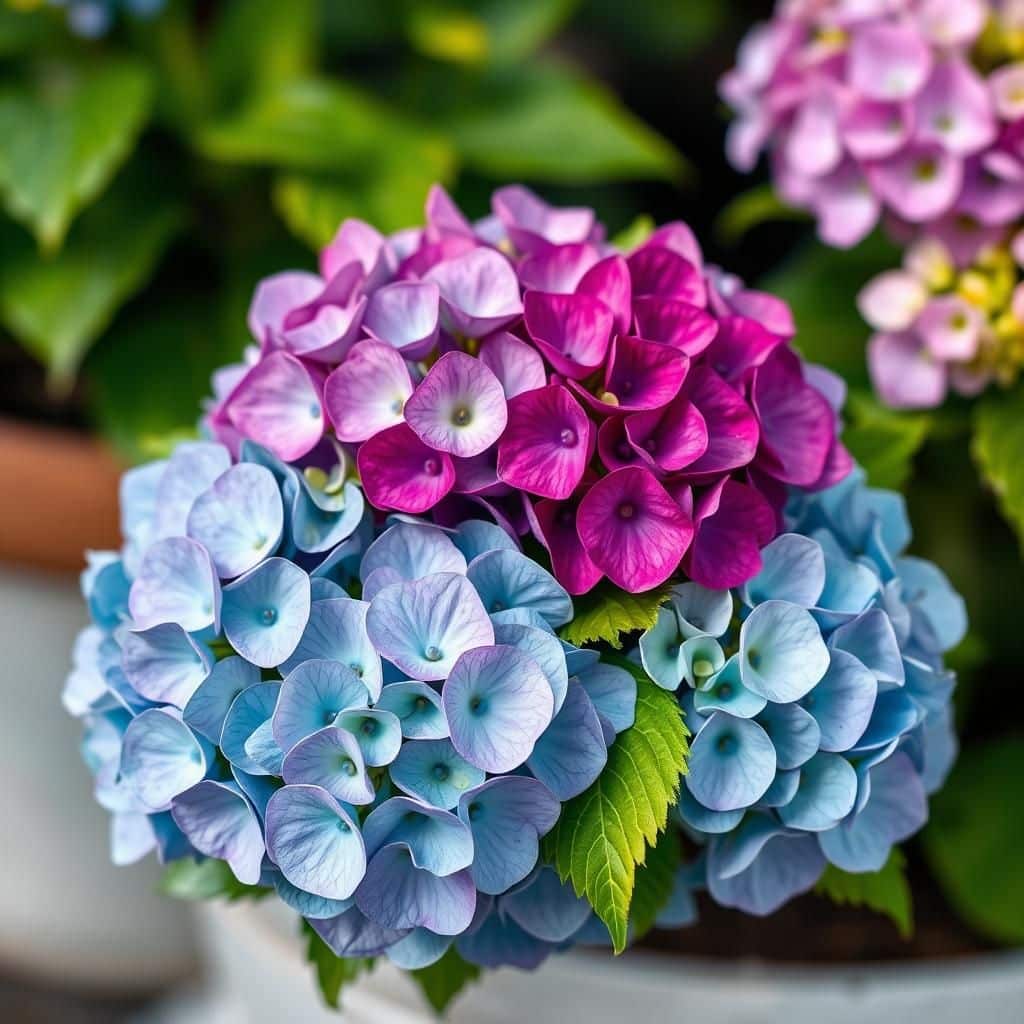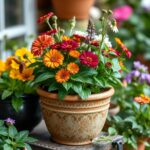Ultimate Guide: How to Grow Hydrangeas in Pots for Vibrant Blooms

Growing hydrangeas in pots can be a rewarding endeavor, allowing you to enjoy their stunning blooms in any outdoor space. Whether you have a small balcony, a patio, or a spacious garden, container gardening provides the flexibility to cultivate these beautiful flowering plants. This ultimate guide will walk you through the essential steps needed to ensure your potted hydrangeas thrive. From selecting the right pots and soil to understanding water and light conditions, we’ll cover everything necessary to achieve vibrant blooms. With a little care and knowledge, your hydrangeas can become the stunning centerpiece of your outdoor décor.
How to Successfully Grow Hydrangeas in Pots
Growing hydrangeas in pots can be a rewarding endeavor, allowing you to enjoy these stunning blooms even in limited spaces. Start by selecting a large, well-draining pot that can accommodate the root system of the hydrangea as it matures. Use a good quality potting mix that retains moisture while providing adequate drainage, and position the pots in a location that receives partial sunlight to ensure the plants thrive. Regular watering is crucial, especially during dry spells, and applying a slow-release fertilizer can promote healthy growth. Additionally, hydrangeas are sensitive to temperature changes, so it is advisable to protect potted plants from extreme weather, especially in winter.
Choosing the Right Pot
When selecting a pot for hydrangeas, it's essential to choose one that is large enough to accommodate the plant's root system. A pot with a diameter of at least 18 to 24 inches is ideal to ensure proper growth. Make sure the pot has drainage holes at the bottom to prevent water from pooling, which can lead to root rot. Terracotta or ceramic pots are excellent options as they provide good insulation against temperature fluctuations.
Soil Requirements
Hydrangeas thrive in a well-draining soil that can retain moisture without becoming soggy. A mix of potting soil, peat moss, and perlite can help achieve the desired texture. Aim for a soil pH between 5.5 and 6.5 for optimal growth, as hydrangeas are sensitive to pH levels, which also influence their flower color. Regularly test the soil pH to ensure it remains within this range for the best bloom results.
Watering Needs
Proper watering is vital for hydrangeas cultivated in pots. They typically require deep watering at least once a week, or more frequently during particularly hot and dry periods. Ensure the water drains freely from the bottom to prevent the roots from sitting in excess moisture. Mulching around the base of the plant can help retain soil moisture while keeping the roots cool, which is essential for healthy growth.
Sunlight Requirements
Hydrangeas prefer partial shade, ideally receiving about 4 to 6 hours of sunlight each day. Too much direct sunlight can scorch the leaves and hinder blooming. Position your potted hydrangeas where they can benefit from morning sunlight and be shielded from the harsh afternoon rays. Observing the plant’s response to its light environment will help you adjust its placement if necessary.
See also:
Fertilizing Hydrangeas
During the growing season, it's important to fertilize hydrangeas to promote vibrant blooms. Use a balanced, slow-release fertilizer that is specifically formulated for flowering plants. Fertilizing should be done in early spring and again in mid-summer to sustain growth. Follow the manufacturer's recommended application rates and be careful not to over-fertilize, as this can lead to lush foliage but fewer flowers.
| Aspect | Details |
|---|---|
| Pot Size | 18 to 24 inches diameter |
| Soil pH | 5.5 to 6.5 |
| Watering Frequency | At least once a week |
| Sunlight | 4 to 6 hours |
| Fertilizing | Early spring and mid-summer |
How long will potted hydrangeas last?

Potted hydrangeas can last for several weeks to several months, depending on a variety of factors such as the type of hydrangea, care provided, and environmental conditions. Generally, with proper care, potted hydrangeas can potentially bloom for about 6 to 8 weeks, especially when they are kept in optimal conditions. Here are more details to consider regarding their lifespan and maintenance.
Factors Affecting Lifespan
The lifespan of potted hydrangeas is influenced by several factors, which include the following:
- Type of Hydrangea: Different species, such as Hydrangea macrophylla or Hydrangea paniculata, have varying lifespans and blooming periods.
- Environmental Conditions: Temperature, light, and humidity greatly impact the health and longevity of hydrangeas.
- Watering Practices: Overwatering or underwatering can lead to root rot or dehydration, affecting the overall lifespan.
Optimal Care Guidelines
To maximize the lifespan of potted hydrangeas, following best care practices is essential:
- Watering: Hydrangeas typically require consistent moisture; water them regularly, ensuring that the soil drains well.
- Light Exposure: Position your hydrangeas in a spot that gets partial sun to achieve the best blooming results.
- Fertilization: Use a balanced fertilizer to support healthy growth but avoid over-fertilizing, which can harm the plants.
Signs of Declining Health
Recognizing signs of declining health in potted hydrangeas can help you act quickly:
See also:
- Wilting Leaves: This may indicate that the plant is either overwatered or underwatered.
- Discoloration: Yellowing leaves can signify nutrient deficiencies or disease.
- Stunted Growth: If the hydrangea does not grow or bloom as expected, it may require different care.
Seasonal Considerations
The season plays a crucial role in the lifespan of potted hydrangeas:
- Spring Blooming: Most hydrangeas bloom in spring, and their lifespan tends to be longer during this period.
- Summer Care: Heat can stress hydrangeas; providing shade and sufficient water will help extend their blooms.
- Fall Dormancy: As temperatures drop, hydrangeas enter dormancy, leading to a decline in life until they re-bloom in the next season.
Post-Bloom Care
After the blooming period, special care can help potted hydrangeas last longer:
- Pruning: Pruning spent flowers encourages new growth and can extend the plant's life.
- Right Environment: Move potted hydrangeas indoors or into a protected area during extreme weather to prevent damage.
- Repotting: If roots have outgrown the pot, consider repotting to provide more space and fresh soil.
Questions from Our Readers
How often should I water hydrangeas in pots?
To keep your hydrangeas healthy, you should water them regularly, ensuring that the soil remains moist but not overly saturated. Typically, watering twice a week is advisable, but during hot weather, you may need to increase this frequency, always checking the top inch of the soil for dryness before watering.
What type of soil is best for growing hydrangeas in pots?
The best soil for hydrangeas in pots is a well-draining, nutrient-rich potting mix. You can enhance the soil by mixing in some organic matter, such as compost, which will improve moisture retention while promoting healthy root growth, ensuring that your hydrangeas thrive.
Do hydrangeas in pots need fertilizer?
Yes, hydrangeas benefit from fertilization to promote blooming and overall health. It's recommended to use a slow-release fertilizer specifically designed for flowering plants in early spring and again in mid-summer to provide essential nutrients throughout the growing season.
Can hydrangeas survive winter in pots?
While hydrangeas can survive winter in pots, they are more vulnerable to extreme cold. To protect them, you should insulate the pots with materials like bubble wrap or burlap, and consider moving them to a sheltered location or covering them with mulch to retain heat and moisture during harsh winter months.
See also:

If you want to read more articles like Ultimate Guide: How to Grow Hydrangeas in Pots for Vibrant Blooms, we recommend you check out our Pots category.
Leave a Reply
Related Articles